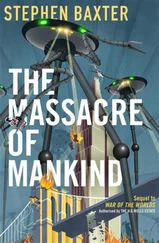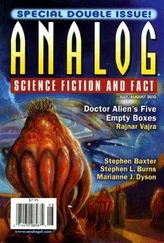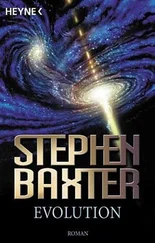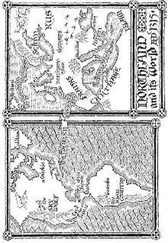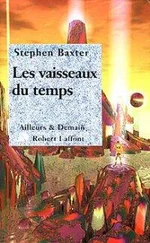Close to, the T-38 was, he conceded, an elegant piece of engineering, a sleek white cylinder with a vanishingly small wingspan, barely wide enough to accommodate two adult human beings under tiny blister canopies.
Geena didn’t acknowledge him as he walked up. The tech helped him climb into the cockpit, and he closed his canopy, and found himself staring at the back of Geena’s helmeted head.
As soon as he was aboard she taxied the jet to the end of the runway. Dials and sticks moved back and forth in his cockpit, a baffling choreography. The jet roar was too loud for him to hear anything through the intercom, if anybody troubled to speak to him, and in his helmet he was sweltering in the cockpit, trapped in a bubble of Houston heat.
When he breathed through his oxygen mask he could smell burned rubber.
The jet accelerated suddenly, throwing him back into his seat. The T-38 was in the air in seconds, and then took off like a dart, tipping itself up and rising almost vertically. The needle nose shot through thin cloud, and when he looked back the ground was turning to a faint grey-green, interspersed with cloud shadows. Ahead, the sky was fading to a rich purple, and — if he read the dials right — they were already at forty-five thousand feet, higher than any commercial jet.
Geena levelled off, and looked back at him.
Suddenly, unexpectedly, exhilarated by being hurled up here, into this bowl of height and speed and light, he gave her a jaunty thumbs-up.
Her voice crackled in the intercom. “So you haven’t upchucked yet.”
“I won’t upchuck.”
“There’s a bag in your flight suit leg pocket.”
“I won’t upchuck.”
“We ought to be sending pilots to the Moon, not scientists with their heads up their backsides. It’s an old argument.”
“Geena, all our arguments are old arguments,” he said.
“This flight is part of the training. Part of your familiarization with the forces you’ll be experiencing during the launch and reentry. Did they tell you?”
“Geena, there is no they. You are they.”
“Remember where that bag is.”
And she threw the plane into a snap roll, a one-hundred-eighty-degree turn in seconds, and then barrel rolls and a parabolic arc and a steep dive over the Gulf of Mexico. Henry’s helmet was bumped against the canopy, and his body strained at the harnesses restraining it, and sunlight and shadows wheeled around him.
Ultimately, he was proud he lasted all of ten minutes before using the bag.
The medical testing, run by Air Force and NASA doctors, struck Henry as brutal and invasive. Hospitals were mostly a mystery to Henry, who had been spared illness save for popped shoulders and busted fingers, the work hazards of the field geologist. Now he found that such exotica as barium meals and enemas and endoscopic probes of the intestines were not just exquisitely painful but also utterly humiliating.
It wasn’t even as if he was genuinely ill, in which case he’d have to endure one or two such tests, and even then they’d be spaced apart. Henry was hit by one after another.
For instance the endoscopy was going to be so painful, he was told, he’d normally be given a shot of Valium in advance. But he’d already had Valium for the gastroscopy, so he had to do without it. And when he went in for his chest X-rays he still had the electrodes over his chest which had been fixed there to monitor his heart, and so the X-rays were marked by small black dots. And so on.
Some of the tests were more relevant to spaceflight. The medicos checked the balance mechanism in his ears, by pouring hot water into one ear, or cold water, and then swapping over. By watching his eyes, seeing if they flickered, the doctors claimed to be able to tell if the temperature differential made him dizzy, and how much.
He was put into a spinning chair, and told to close his eyes and tip his head up and down, from his knees to the head rest. A few minutes of this was enough to make him want to throw up, which, it turned out, was the idea.
Back at JSC, he was put through altitude chamber tests.
The chamber was a big metal box with thick glass portholes, through which protruded TV lights and cameras. It turned out that some of the cameras belonged to the doctors, and some to the press; such was the public interest in the mission he was already a reluctant media star.
He was taken up to a simulated forty-four thousand feet, and the air bled out of the chamber slowly. When the air was down to a quarter sea-level pressure, his lung sac expanded so much it ached; his bowels distended, making him fart explosively. Eventually the air pressure got so low he was forced to pressure-breathe into his oxygen mask: when exhaling, he had consciously to force air out of his lungs.
He had never in his life had to control, consciously, his breathing. It scared him.
They took him back to sea level. And then, without warning, they hit him with a rapid decompression test.
Suddenly he was at twenty-five thousand feet, and in the middle of a simulated bail-out. The air was sucked out of his lungs, and pain stabbed in his ears; when they returned the air, the room filled up with a cloud of condensed vapour.
He wasn’t sure what the surgeons were learning from such things. But he was learning, brutally, a lot more respect for his ex-wife and the other pilots.
The tests got tougher.
Sealed inside a dummy spacecraft he was slammed into deep pools so that he could practise unhooking his harnesses, opening the hatch, swimming to the surface and activating his survival systems. He was sent up in the Vomit Comet, a converted transport plane which followed elaborate parabolic loops through the sky so that, falling freely inside the aircraft, he could experience weightlessness for twenty or thirty seconds at a time. During the first he was made to sit still, to find out how it was going to feel: like, it turned out, going over the lip of the world’s biggest roller-coaster, and never coming down. On the second loop he was allowed to move around, floating from ceiling to floor, wall to wall. At the end of every loop he had to make sure his feet were on the floor before the plane went into its recovery. He practised moving large masses, throwing a medicine ball to Geena, feeling the reaction as he was pushed backwards. Henry learned how to brace himself, to get the reaction he needed, and to judge the centre of mass of a complex object, to learn to shove and control without sending it rolling.
Then he was put through another flight where he had to do the whole thing again, but wearing a spacesuit.
The next day Geena flew him to Johnsville, Pennsylvania, to the Navy’s Acceleration Laboratory, for a ride in what the technicians here called, cheerfully, the County Fair Killer. It turned out to be a centrifuge, a cage with a seat and other equipment which got spun around inside a circular room. During the launch he would be given a protective G-suit to wear, but for now he had nothing to protect him, save exercises on tensing his muscles and holding his breath, to make his blood pressure well up.
When you thought about it, he realized, a centrifuge was a symbol of the high frontier. Only pilots of high-performance aircraft and astronauts would be accelerated to the rates that kind of centrifuge could provide. He found out later that NASA didn’t even have any centrifuges of its own any more. The Shuttle ride to orbit was so gentle the astronauts were subjected to no more G than you’d suffer on a moderate switchback ride.
On the other hand, during the most crucial stages of launch and reentry, Henry would not be in the hands of NASA.
It didn’t seem so bad when it started. A mix of fairground ride and James Bond torture chamber. But the force was eyeballs-back, as the pilots called it, an intense pressure on his chest, as if a ton of bricks was being piled on there. Breathing got more difficult, and he could feel his face distending. He felt oddly self-conscious; there was a closed-circuit TV camera fixed on his pancaked face through the whole experience.
Читать дальше
Конец ознакомительного отрывка
Купить книгу


